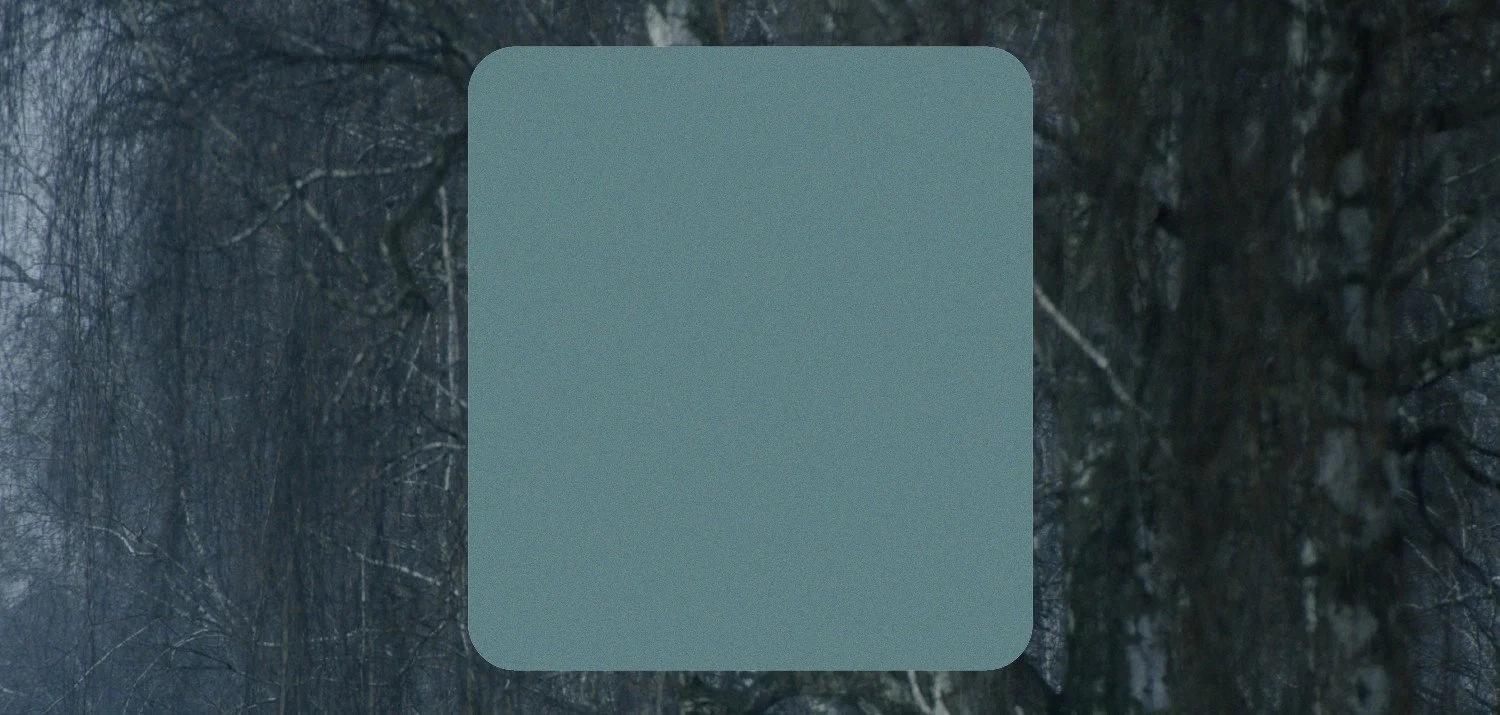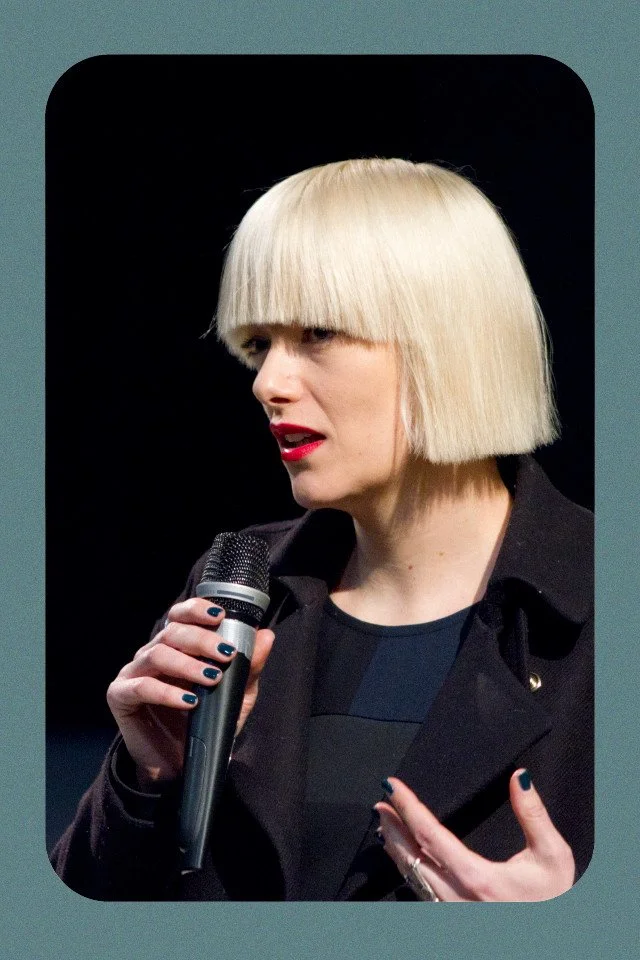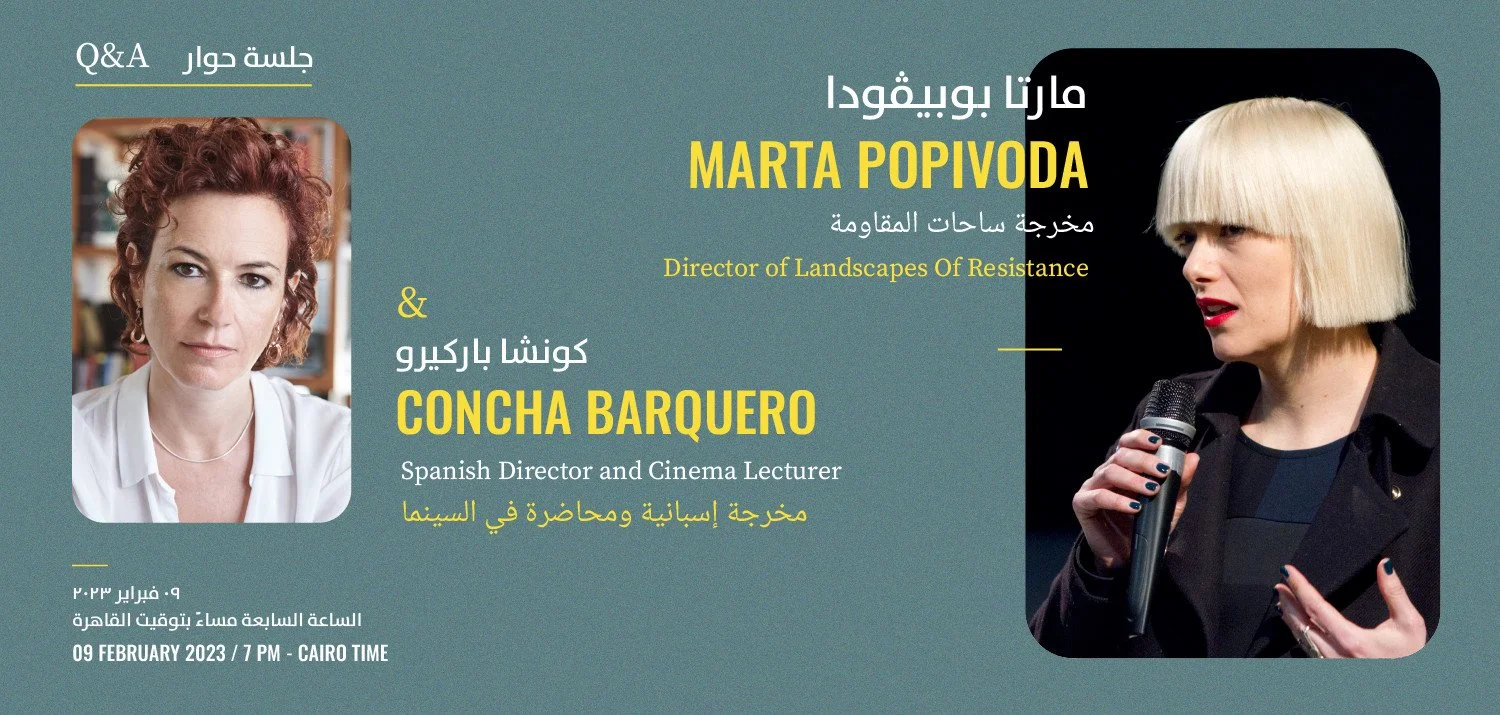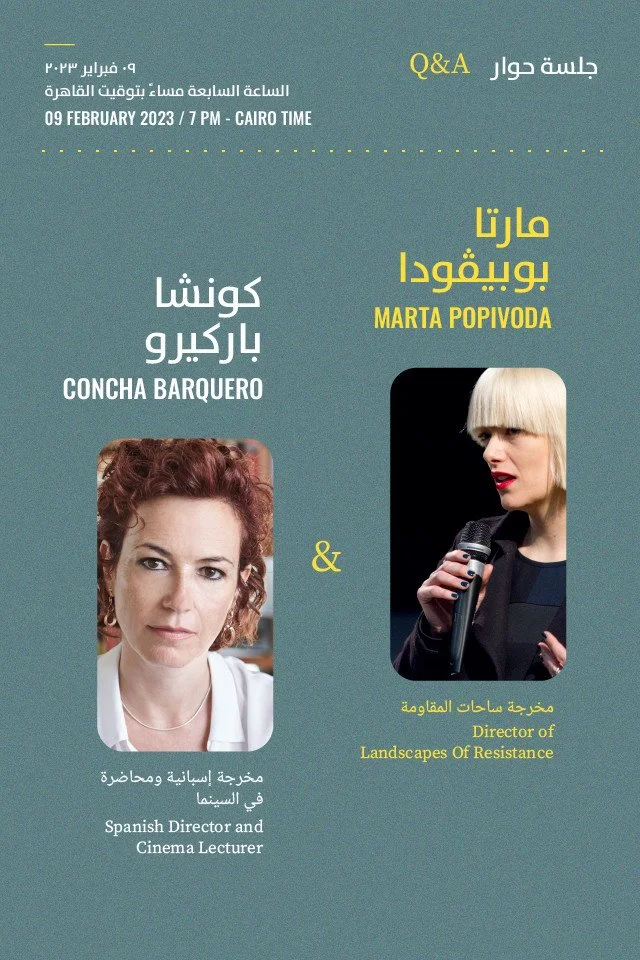

سونيا، المقاتلة المناهضة للفاشية ذات الـ٩٧ عامًا، كانت أول امرأة ثورية في يوغوسلافيا وإحدى أعضاء المقاومة في أوشڤيتز. مستمعين إلى حكاياتها، نتجول في ساحات ماضيها الثوري، بينما تبدأ ذكرياتها في التداخل مع المواجهة الحالية لصانعتي الفيلم ضد الفاشية المتصاعدة في أوروبا اليوم.
97-year-old antifascist fighter Sonja was one of the first female partisans in Yugoslavia and a member of the resistance in Auschwitz. By listening to Sonja’s stories, we travel through the landscapes of her revolutionary past, as her memories start to intertwine with the filmmakers’ own confrontation with the rising fascism in Europe today.

Director of
Landscapes of Resistance
MARTA
POPIVODA
Director, Producer, Co-Author
______
Marta Popivoda is a filmmaker, video-artist, and researcher. Her work explores tensions between memory and history, collective and individual bodies, as well as ideology and everyday life, with a focus on antifascist and feminist potentialities of the Yugoslav socialist project.
Popivoda’s first feature documentary, Yugoslavia, How Ideology Moved Our Collective Body, premiered at the 63rd Berlinale and was later screened at many international film festivals. The film is part of the permanent collection of MoMA New York, and is featured in What Is Contemporary Art?, MoMA’s online course about contemporary art from 1980 to the present.
Her work has also been featured in major art galleries, such as Tate Modern London, MoMA New York, M HKA Antwerp, Museum of Modern Art + MSUM Ljubljana, etc.
Popivoda received the prestigious Berlin Art Prize for the visual arts by Akademie der Künste Berlin and Edith-Russ-Haus Award for Emerging Media Artist. Her latest feature documentary Landscapes of Resistance premiered in the Tiger Competition of the International Film Festival Rotterdam, IFFR 2021.
By now the film has won several awards (Cinema du Réel - Library Award; Jeonju IFF - Best Picture Prize; Thessaloniki Documentary Festival - Golden Alexander Award; Sarajevo Film Festival - Heart of Sarajevo; Beldocs - Best Film Award, Lima Alterna IFF - Best Film Award).
مخرجة
ساحات المقاومة
مارتا
بوبيفودا
مخرجة ومنتجة ومؤلفة مشاركة
______
مارتا بوبيڤودا صانعة أفلام وفنانة فيديو وباحثة. تهتم أعمالها باستكشاف التوترات بين الذاكرة والتاريخ، والكيانات الجمعية والفردية، والأيديولوجيا والحياة اليومية، وتركز على الإمكانات المناهضة للفاشية والإمكانات النسوية للمشروع الاشتراكي اليوغوسلافي .
حاز أول فيلم طويل لبوبيڤودا، «يوغوسلافيا: كيف حرَّكت الأيديولوجيا كياننا الجمعي» على عرضه الأول في مهرجان برلين السينمائي الدولي في نسخته الـ٦٣، وعُرِض بعدها في العديد من المهرجانات الدولية. الفيلم جزء من المجموعة الدائمة في متحف الفن الحديث بنيويورك، وكذلك يُعرَض ضمن المساق التعليمي الذي يتيحه المتحف عبر الإنترنت بعنوان: «ما الفن المعاصر؟»، عن الفن المعاصر منذ عام ١٩٨٠ وحتى وقتنا الحاضر.
عُرِضت أعمال بوبيڤودا في العديد من المتاحف الفنية المرموقة، مثل متحف الفن الحديث في لندن، ومتحف الفن الحديث في نيويورك، ومتحف الفن المعاصر في أنتويرب في بلجيكا، ومتحف الفن الحديث في ليوبليانا، وغيرها.
حصلت بوبيڤودا على جائزة برلين الفنية في الفنون البصرية من أكاديمية الفنون في برلين، وجائزة إديث روس هاوس للفنان الصاعد. فيلمها التسجيلي الأحدث، «ساحات المقاومة»، حاز عرضه الأول ضمن مسابقة النمر في مهرجان روتردام السينمائي الدولي عام ٢٠٢١.
حتى الآن، فاز الفيلم بعدة جوائز، منها: سينما دي رييل، وجائزة المكتبة من مهرجان جونجو السينمائي الدولي، وجائزة أفضل صورة من مهرجان سالونيك للأفلام التسجيلية، وجائزة أليكساندر الذهبية من مهرجان سراييفو السينمائي، وجائزة قلب سراييفو في مهرجان بيلدوك، وجائزة أفضل فيلم من مهرجان ليما ألتيرنا السينمائي الدولي.

يصف فيلم "بطريقة أو بأخرى" الحياة في حيٍ فقير في كوبا ما بعد الثورة
.
القيم والقدوات التي يحتذي بها من يعيشون هناك لم تتغير منذ بناء المساكن الجديدة. حيث أنه ليس بالإمكان إنشاء مجتمع جديد عند الطلب
.
"يولاندا" المعلمة في المدرسة الإبتدائية، و"ماريو" الذي يعمل في مصنع للحافلات، أصبحا ثنائي.
بينما تسعى يولاندا جاهدةً من أجل نهجٍ تربوي يدمج الطلاب المهمشين، الأمر الذي يتسبب في صراعٍ مع زملائها وأولياء الأمور، يجد ماريو صعوبة في التخلي عن قدوات المجتمع الذكوري
.
مُثُلهم المتناقضة تضع علاقتهما على المحك، وفي الوقت ذاته، تعكس عملية التحول الإجتماعي بشكلٍ نقدي.
يُعد فيلم "بطريقة أو بأخرى" أول فيلمٍ طويل كوبي لمخرجة، كما أنه في نفس الوقت آخر أفلام "غوميس
".
DE CIERTA MANERA describes life in a poor neighborhood in post-revolutionary Cuba.
The values and role models of those living there haven’t changed since the construction of new housing; a new society cannot be created on demand. Yolanda, an elementary school teacher, and Mario, who works in an omnibus factory, become a couple.
While Yolanda strives for a pedagogical approach that integrates marginalized students, causing a conflict with her colleagues and the parents, Mario finds it difficult to let go of patriarchal role models.
Their contrary ideals also put the relationship to the test, while at the same time critically reflecting the process of social transformation.
DE CIERTA MANERA was the first Cuban feature-length film by a woman director, and at the same time it was Gómez’s last film.







